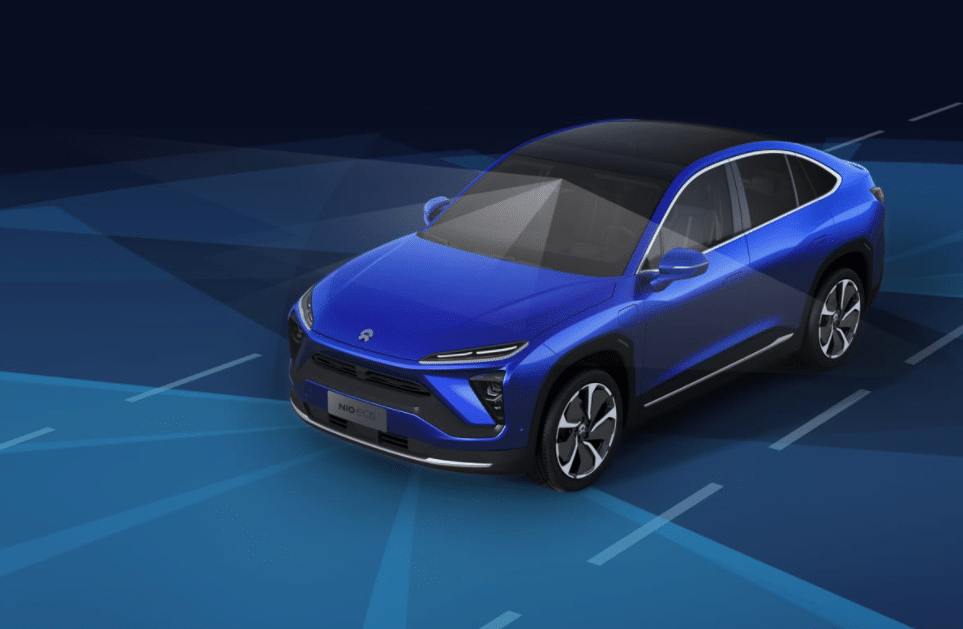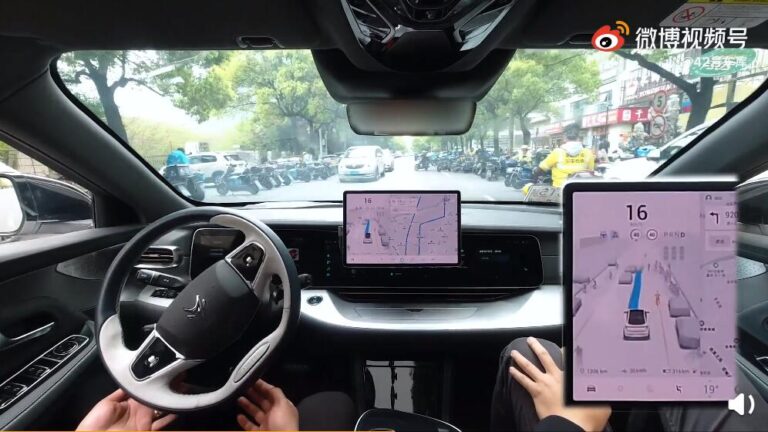As electrification brings disruption to the auto industry, valuing car companies is a challenge. Now, CICC, China's top investment bank, is offering its take.
In a research note released Wednesday, CICC analysts Wang Lei, Liu Chang, and Chang Jing argue that the valuation system for the auto industry is changing and that their profits on hardware and manufacturing will remain reasonable but low, with software profits and service revenues becoming the valuation anchors for a new era.
This is actually not new, as many analysts have made similar arguments before, but CICC mentioned that the biggest difference between their view and others is that they believe that the practice of charging for self-driving features may not be sustainable in the long run, and that car companies need to move to a "channel fee" profit model.
The team said that while there are differences in capabilities among the leading car companies, the final products will converge. In the future, autonomous driving features will become "infrastructure" and lose their ability to make users pay.
With the cell phone industry worth about $450 billion in 2020 and the market value of mobile Internet companies at nearly $6 trillion, content is generally more valuable than hardware, the team said.
Similarly, as autonomous driving enters people's lives, the value chain shifts as drivers' attention shifts from inside to outside the car, and companies that provide in-car entertainment, consumption, and content are likely to be more valuable, the team said.
The model of car companies will eventually evolve to resemble cell phones, which need to rely on the content ecology rather than their own software to make a profit, and charge "channel fees" in the process of providing services, the team said.
Here are some of the key arguments from CICC, summarized and translated by CnEVPost.
Software profits and service revenues become anchors
The auto industry has long relied on new car manufacturing and sales for profits, but if they charge for some services on which customers rely heavily, it brings about a change in the industry's revenue structure.
In this case, they can earn more revenue by making the user base larger rather than relying on new car sales for profit.
Tesla, Nio, and Xpeng Motors' attempts at autonomous driving are typical examples.
Tesla is currently charging users a one-time fee when they buy out access to the software, and if it reaches a 60% penetration rate, its software profits could outperform Daimler.
Assuming a 10-year cycle, Tesla is investing RMB 50 billion in the Autopilot feature. With a high-level autopilot charge of $10,000 and 40% software penetration, a single new car can contribute close to RMB 10,000 in profit, which already exceeds the hardware profits of most vehicle companies.
At 60% penetration, the software contributes about RMB 28,000 to profit per vehicle, comparable to Daimler's per-vehicle profitability at its peak.
Similarly, Xpeng launched XPilot 3.0, which requires users to pay RMB 20,000 if they pay in a lump sum, or they can pay over three years, but they need to pay RMB 36,000.
Nio has tried the software SaaS subscription model to lower the threshold of experience and increase user convenience.
Nio innovatively introduced a subscription model for autonomous driving, which allows users to pay monthly rent for the feature.
The service fee charged by Nio is RMB 680 per month, which significantly lowers the threshold for users to experience the autonomous driving function and reduces the difficulty of customer acquisition.
Users who continue to subscribe to the feature for six years can contribute nearly RMB 20,000 per vehicle to Nio, about the same level as BMW.
The SaaS model also increases subscriber convenience, making it possible to provide "on-demand" autopilot features, with vacations that usually see long-distance travels likely to be the peak period for autopilot subscriptions.
Self-driving software may lose its ability to charge
The ability to charge for in-vehicle software is more valuable than for ordinary commercial software SaaS companies.
Software SaaS companies typically face higher sales overheads, resulting in high marginal customer acquisition costs.
Leading overseas SaaS companies have sales overheads of about 43% of all expenses, the largest expense component. Therefore SaaS companies more often use PS valuation approach to cope with the current situation of no short-term profit.
Car software fees have a strong exclusivity, making customer acquisition costs low and bringing a high customer lifetime value.
The average life of a vehicle is up to about 10 years, so once customers start to develop a reliance on in-car software, then car companies can get a longer consumption cycle.
But under a long-term perspective, the model of charging through in-car software may not last.
Car companies, including Tesla, are currently making charging possible with autonomous driving capabilities that are clearly ahead of their peers.
But in the long term, the leading companies can achieve similar high-level autonomous driving capabilities on some structured roads (highways, parks, terminals). In urban areas, they are constrained by the degree of regulatory openness to open up high-level autonomous driving technology in the short term.
These factors can lead to differences in autonomous driving capabilities across car companies but convergence in the final product, thus depriving autonomous driving software of its ability to charge.
Apple does not profit from its own software (camera, photography, maps, music software, e-wallet, and other features free of charge), but charges a "channel fee" (iTunes, App Store, In-app purchase).
This is because when the services converge, these functions will eventually tend to be free, which is more similar to the recent ability to charge for self-driving software.
The cell phone industry is worth about $450 billion in 2020, and mobile internet companies have a market cap of nearly $6 trillion, with content, in general, being more valuable than hardware.
Similarly, the automotive industry is worth about $1.8 trillion in 2020. When high-level autonomous driving is realized, the attention of drivers and occupants shifts from inside to outside the car, which also brings about a shift in the value chain.
Among them, companies that provide in-car entertainment, consumption, and content may be more valuable. The business model of car companies also shifts from the current model of getting profit from selling new cars to relying on software (autonomous driving), which eventually turns into charging channel fees in the process of providing services.
If the value chain of the auto industry eventually shifts from inside the car to outside the car, the strength of the "channel" it can provide becomes the core of the valuation multiple.
A car company with a higher market share and a stronger premium to content providers should get more revenue from its traffic control.


